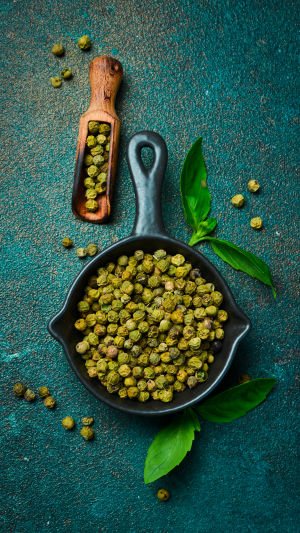Chinese prickly ash, also known as Sichuan pepper or Szechuan pepper, is a common spice in Chinese cuisine and traditional medicine.
It is a shrub or small tree belonging to the citrus family (Rutaceae), and its botanical name is Zanthoxylum simulans, Zanthoxylum bungeanum, or Zanthoxylum piperitum, depending on the species.
The plant is native to China and is cultivated for its unique aromatic peppercorns, which are not true peppers but rather the dried husks of the prickly ash fruit.
The leaves of the Chinese prickly ash are pinnately compound, and the plant produces small yellowish-green flowers that develop into clusters of tiny, reddish-brown seed capsules.
The peppercorns of Chinese prickly ash are prized for their distinct citrusy, floral aroma and a numbing, tingling sensation they impart on the palate, rather than heat.
This characteristic numbing effect is known as "ma" in Chinese cuisine and is a defining feature of Sichuan cuisine, where the spice is extensively used.
Chinese prickly ash is widely cultivated in many regions of China and plays a significant role in Chinese culinary traditions, particularly in Sichuan and other southwestern cuisines. Its unique flavor profile and cultural significance make it an integral part of the diverse tapestry of Chinese spices and seasonings.
In addition to its culinary use, Chinese prickly ash is also valued in traditional Chinese medicine for its potential medicinal properties, including promoting circulation and alleviating digestive discomfort.
Chinese prickly ash is known for containing various active compounds, including alkaloids, terpenoids, flavonoids, and essential oils. These compounds are responsible for the distinctive numbing and tingling sensation that the spice imparts, as well as its aromatic qualities.
While Chinese prickly ash is not a notable source of macronutrients such as carbohydrates, protein, or fat, it does contain some micronutrients and bioactive compounds that may have health-promoting properties.
For example, certain compounds found in Chinese prickly ash, such as flavonoids, have antioxidant properties and may help combat oxidative stress in the body.
It has been determined that every 100g of pepper contains 7g of protein, 8.9g of fat, 29g of dietary fiber, 23 micrograms of vitamin A, 7 micrograms of carotene, 2.47 micrograms of vitamin E, 639 milligrams of calcium, magnesium 111 milligrams of phosphorus 69 milligrams of potassium 204 milligrams of selenium 2 micrograms of sodium 47.4 milligrams of manganese 3.33 milligrams of copper 1.02 milligrams of niacin 1.6 milligrams of niacin.
Chinese prickly ash not only eliminates the fishy smell of meat but also has a preservative effect. So, when stewing meat or fish, 5-10 Chinese prickly ashes can be added, which not only removes the fishy smell but also helps with preservation.
Chinese prickly ash can also promote gastrointestinal peristalsis, increase appetite, and have a regulating effect on human appetite loss and indigestion.





